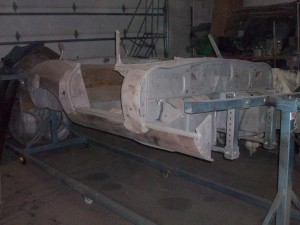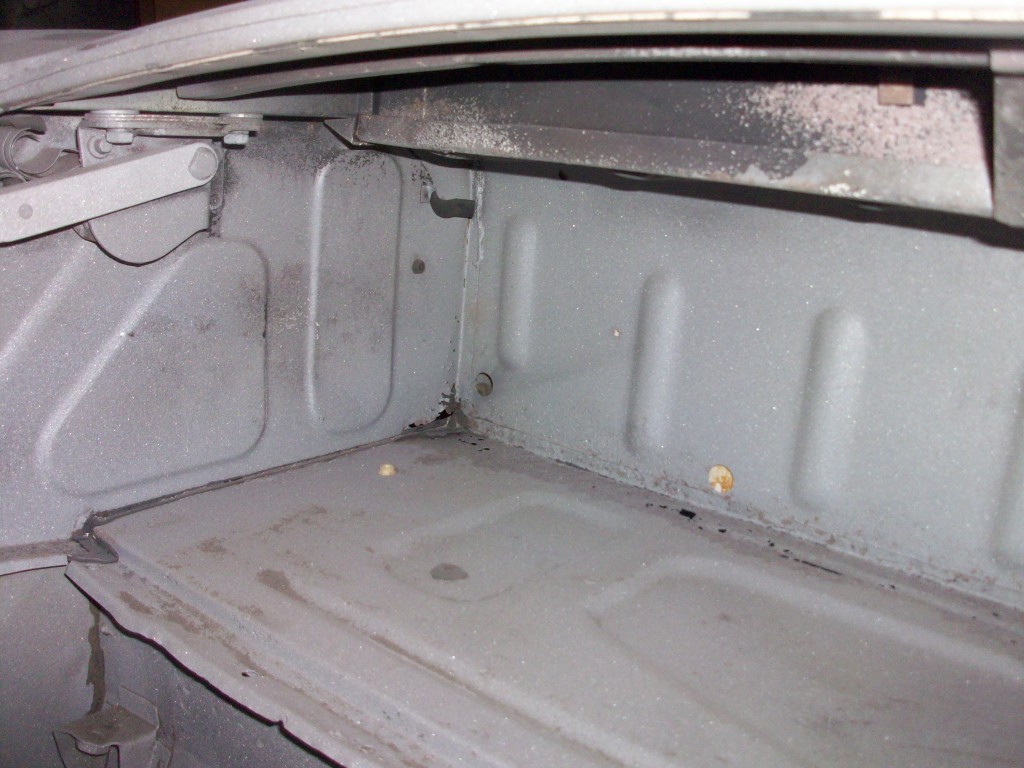This car is not at the shop yet, it’s due to arrive in 3 days. However, I’m basically buried once it does, and with the current work plus the new building going up, I wanted to at least get this first entry in now while I have a little time! This car is going to be a fun one – it reminds me of my own car – a Series 1 roadster with lots of history and action!
This car is a little more corroded than the ’63 OTS it will be sharing the shop with this month. Whereas that car has rock-solid sills and floors, the ones in this car have pretty much had it. We’re going to bring this car back to life – right – by replacing the full floors and inner and outer sills on both sides. It looks like the RH outer sill and boot floor have already been replaced – MANY YEARS AGO – by being brazed into place.
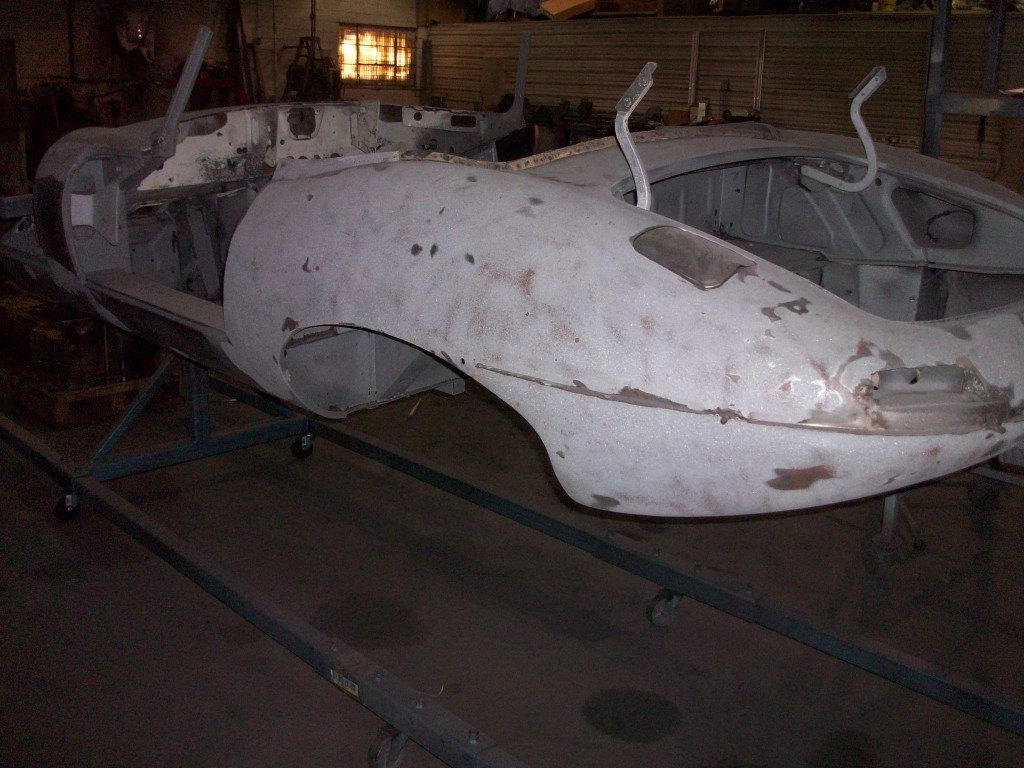
This is not an exaggeration - my heart actually stopped for a split second - I actually felt something in my chest when I finally figured out what I was looking at here! I wasn't scared so much as just shocked - I've never run into this on an E-Type. There are few spots of bare steel peeking through, but what you're seeing here is basically solid LEAD! I'm very anxious to see how "correct" the work is - if it's a decent job, it's staying put!
Every project has its particular challenge, and what concerns me on this car is the extensive use of lead body filler in its past… When it’s just sitting there it can’t hurt you, but you CAN NOT sand it under any circumstances – it has to be filed so no lead dust is created, and melting it out is best, but then the fumes are a concern. And, it’s EVERYWHERE on this one! For this reason, we are probably going to leave the LH rear wing as-is, and melt the lead out of the bonnet and start over.
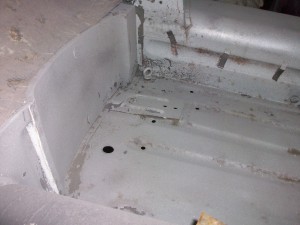
This photo pretty much clinches the need for the inner sill to be replaced - which means a new outer sill and all gussets and closing panels too. I'm also expecting some corrosion inside the inner structure of the B-Post/Shut-face area...
There is also some corrosion in the bottom of the interior rear bulkhead panel, and the panel above the rear axle. We’ll know more about what other issues we might uncover once the car arrives. But, whatever challenges it confronts us with, we’ll conquer!
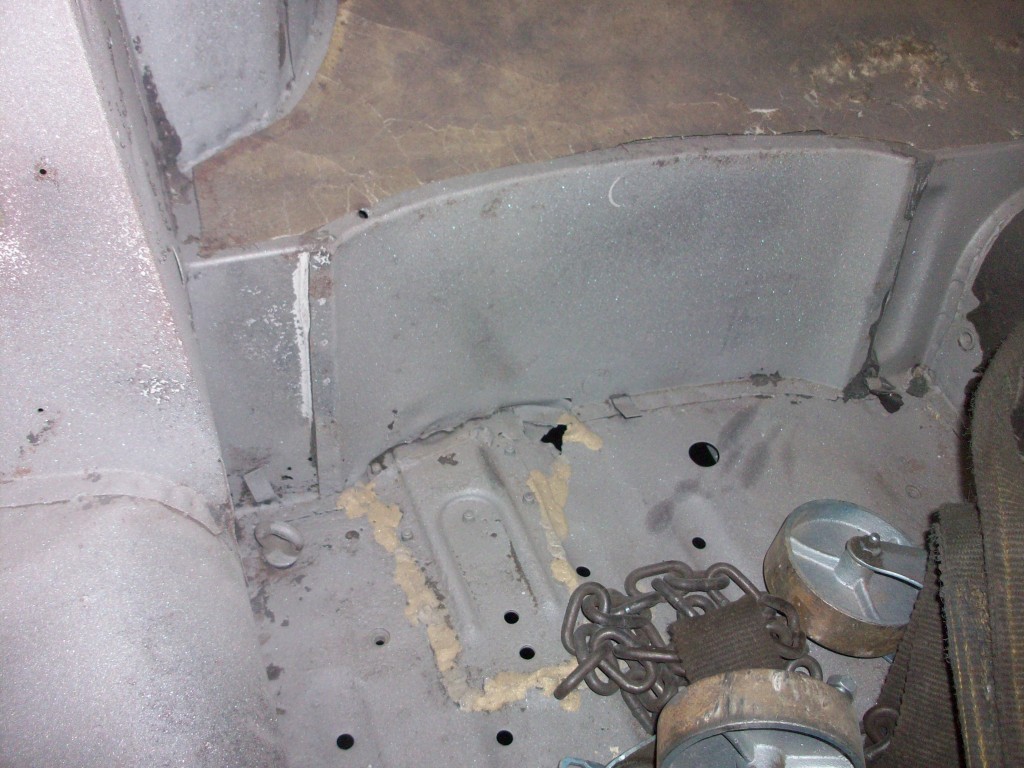
New LH floor is in order as well - the previous restorer may have been an alchemist - they LOVED the soft metals - lead, brass, and LOTS of it!
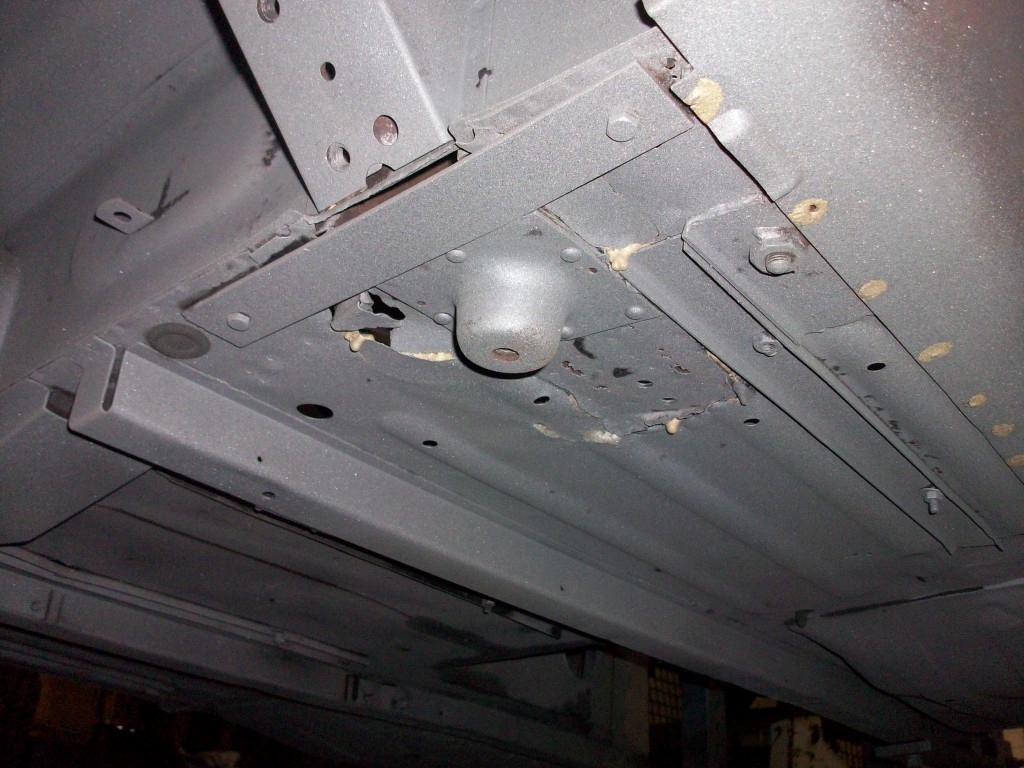
I LOVE THIS! - Brings back the memories... Look closely - this was NOT rust damage - this is metal fatigue from HARD driving - this car has seen some ACTION and has some stories to tell! An E-Type pushes on this cup and plate every time you punch it, and pulls back on it when you stand on the brakes, and just like bending a piece of steel back and forth with your hands, eventually, it tears the whole thing out of there. My own car suffered the same abuse, and the whole nine yards finally gave way when my college girlfriend popped the clutch while trying to teach her to drive a stick... After that, I built a small internal subframe of .125 wall box steel across the back of both seats, and installed solid, heim-jointed radius arms. That just added to the bone-jarring ride characteristics of the car in its later years... But, I never had THIS problem again!
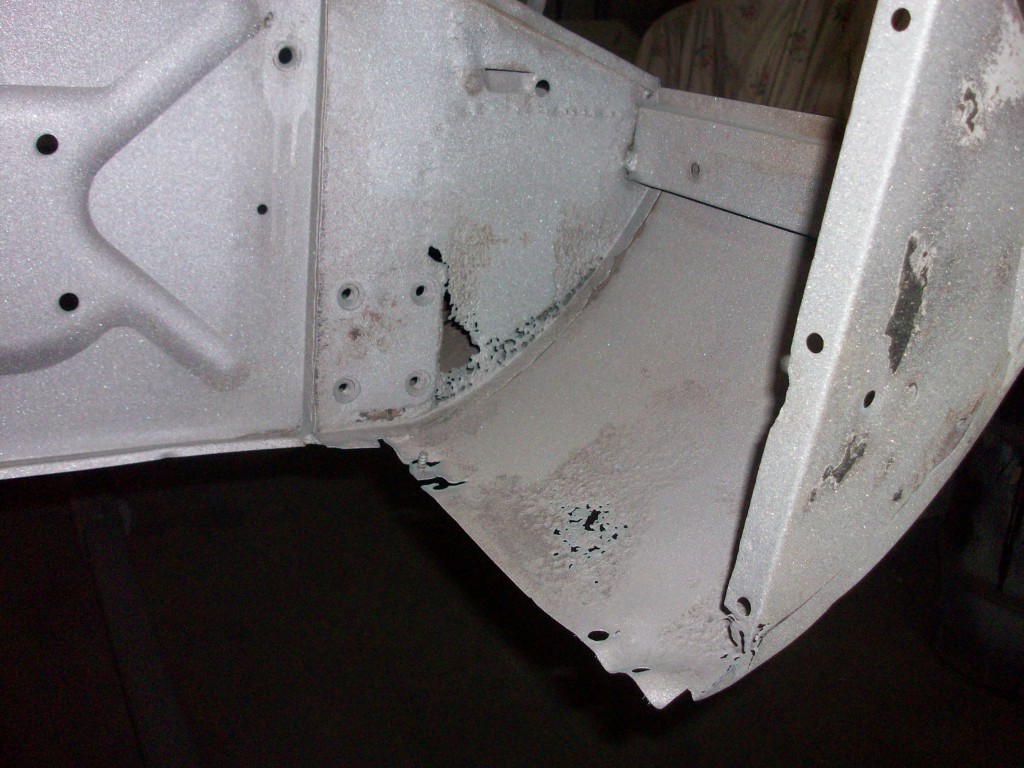
Very typical battery-acid damage - most E-Types have it by now. You can purchase the panels to repair this damage in our online store.
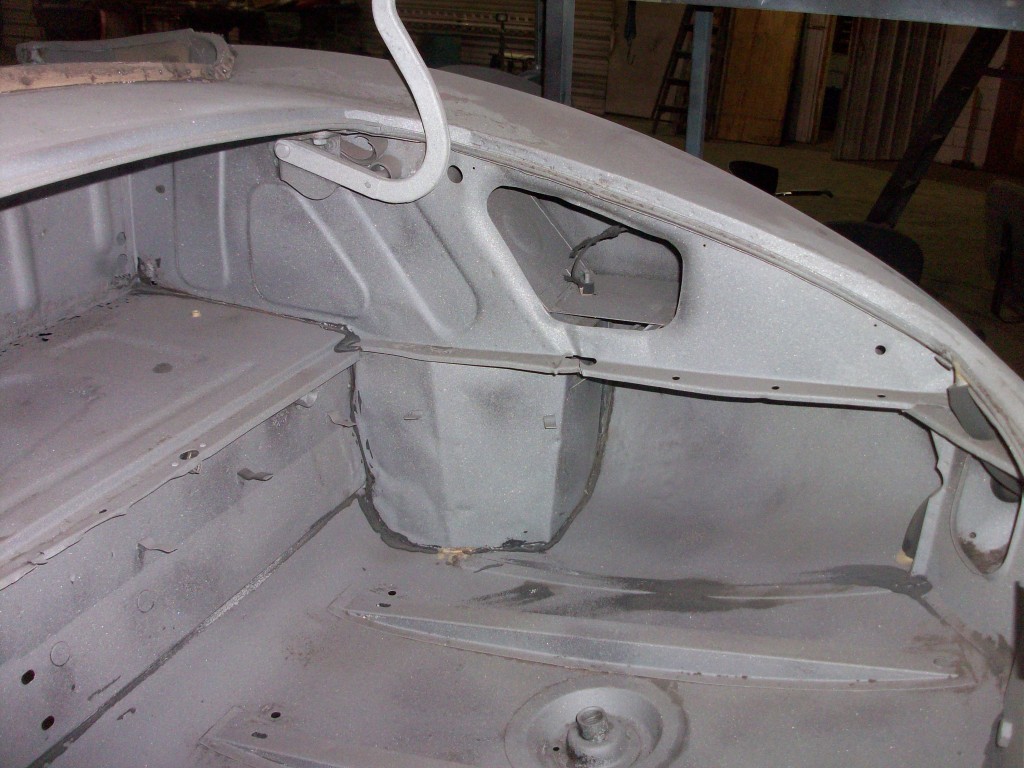
I'm not ready to bet my life on it, but I'm 99% certain this is a replacement boot floor. It's too nice compared to the rest of the car, and the RH outer sill was replaced, and there are no spot-weld dimples on the side flanges, AND look in the corner down by the wheel-well - those other panels are wrinkled but this one is dead-straight. This is probably brazed in from underneath, and while the repair method would not be my first choice, this is a decent job and can stay. Wrinkle in the upper boot side wall just under the fuel pump access hole points to an almost certain smack in the rear...

